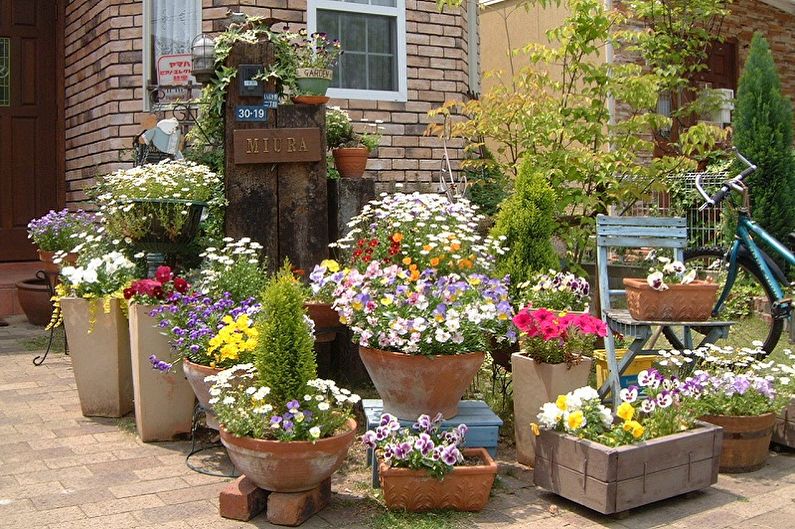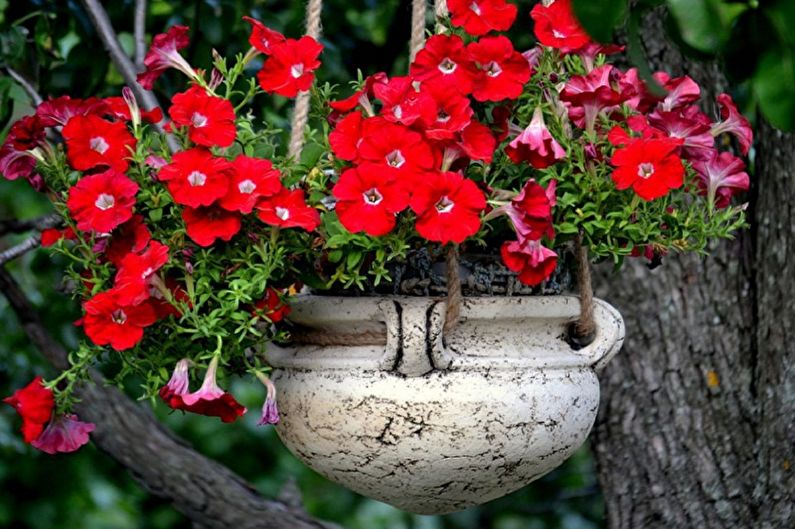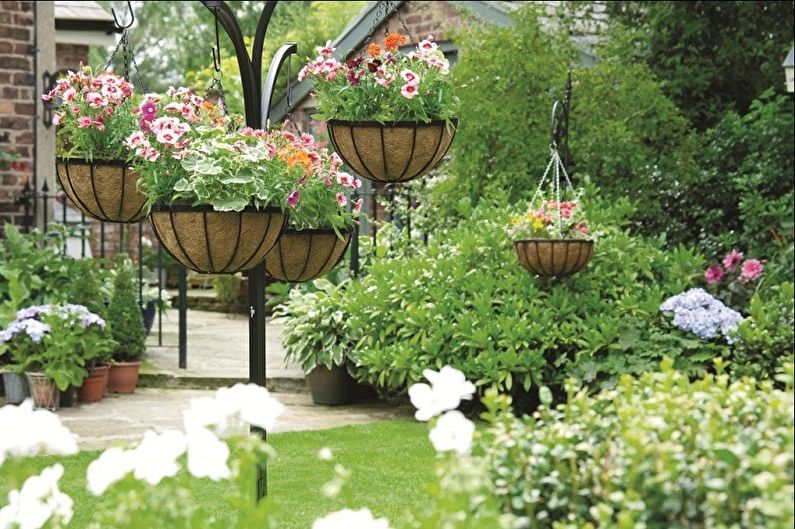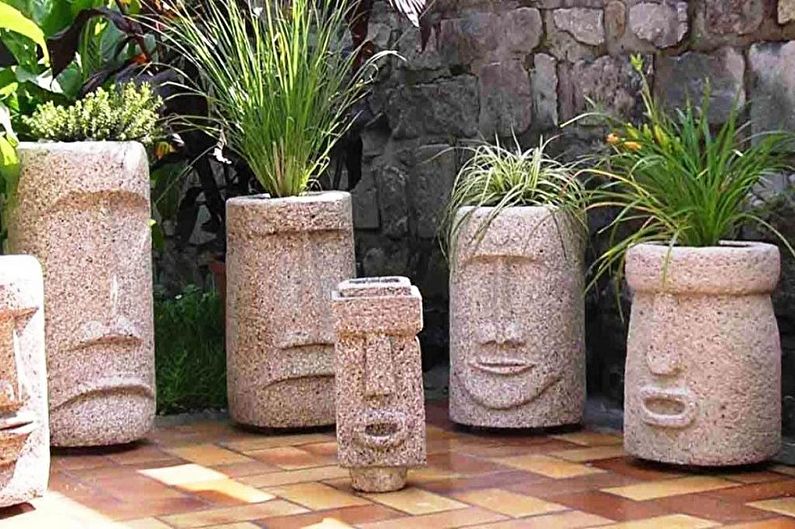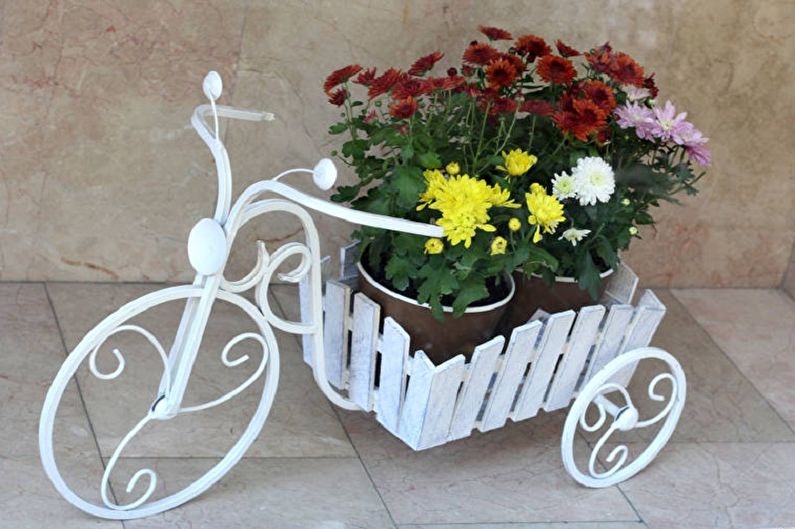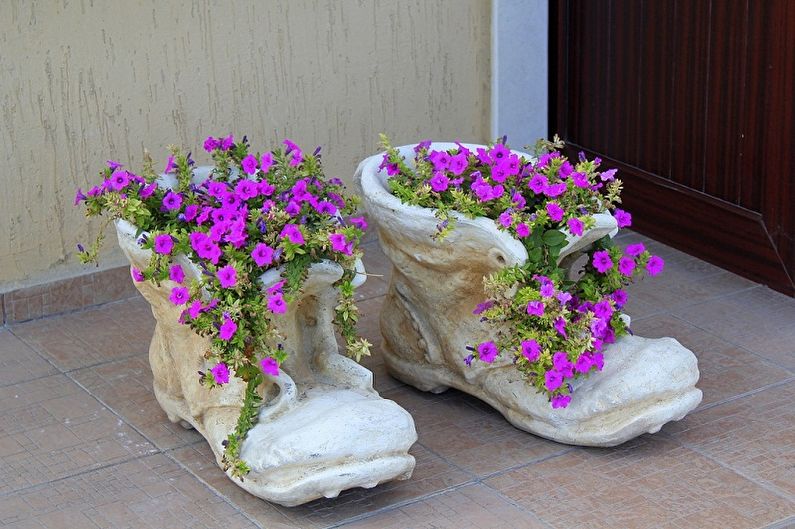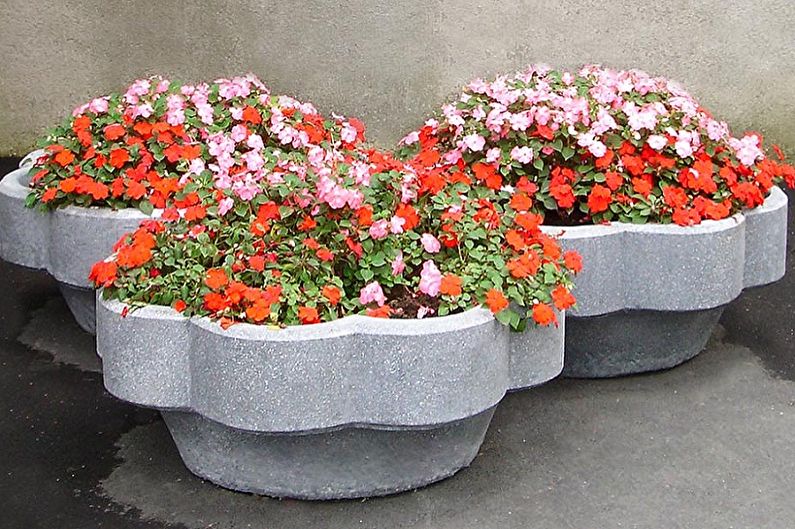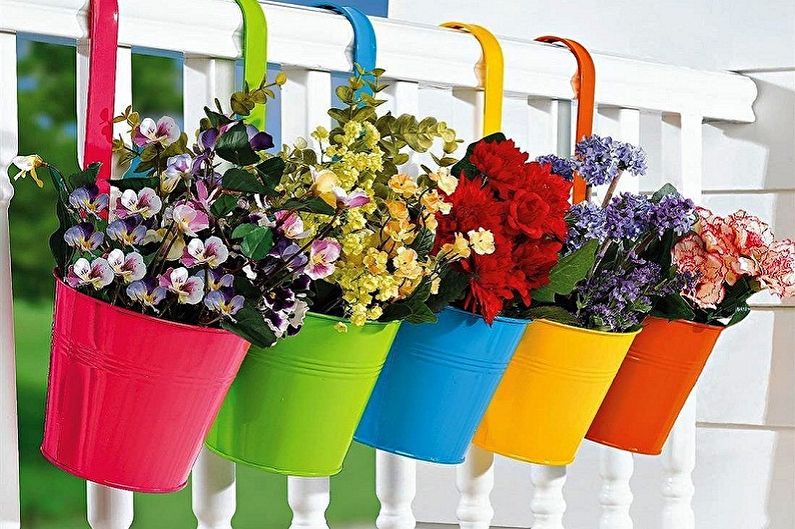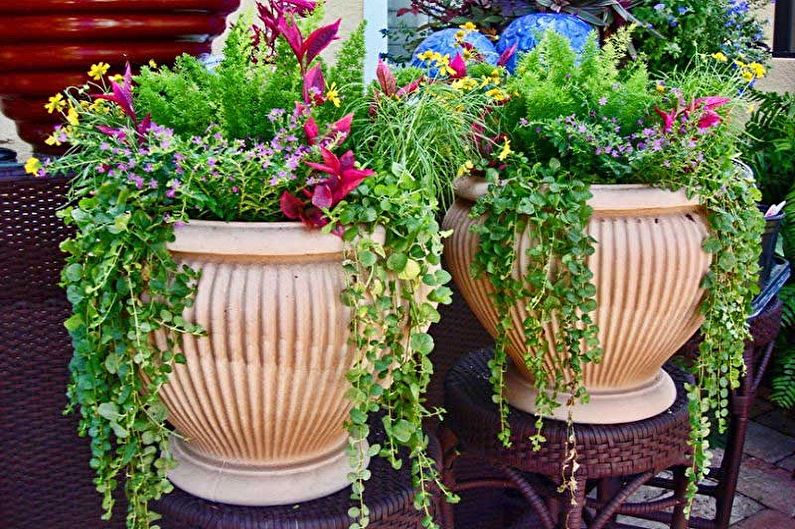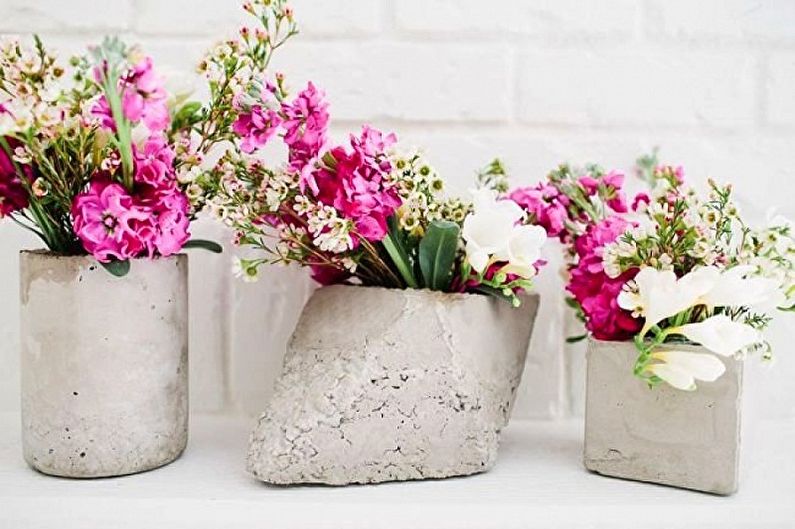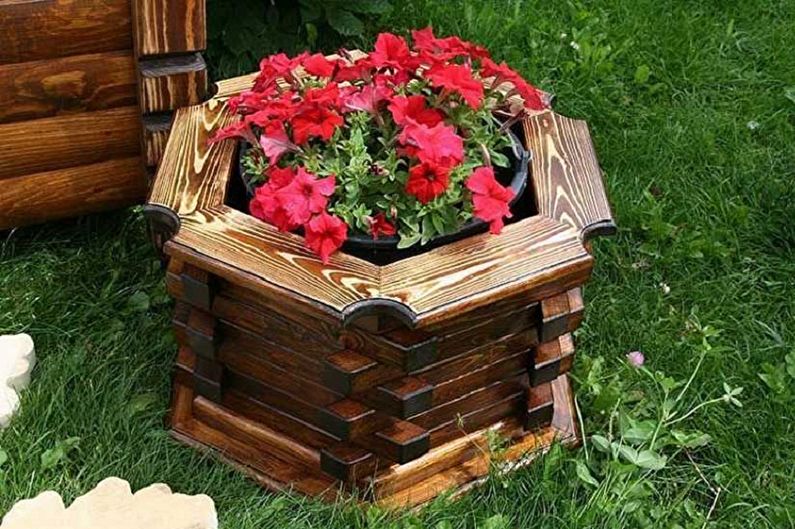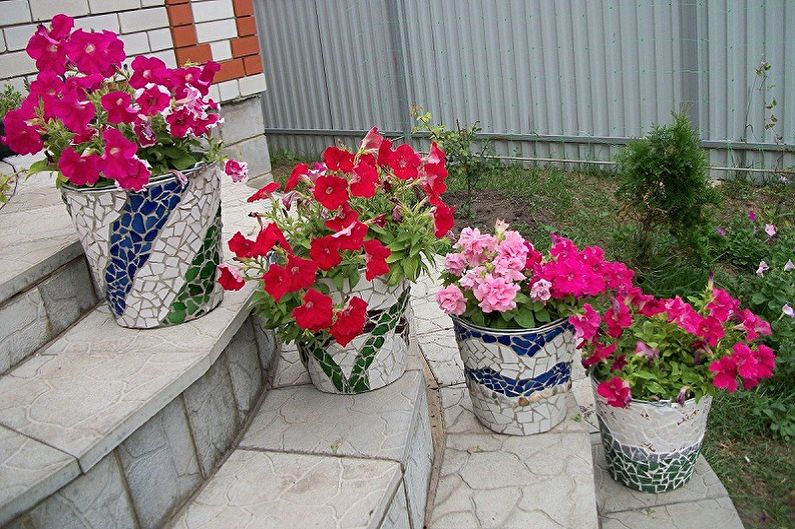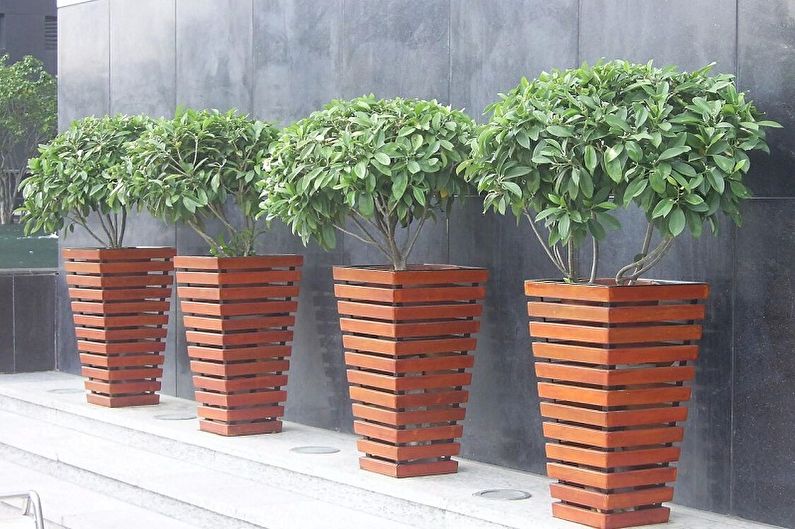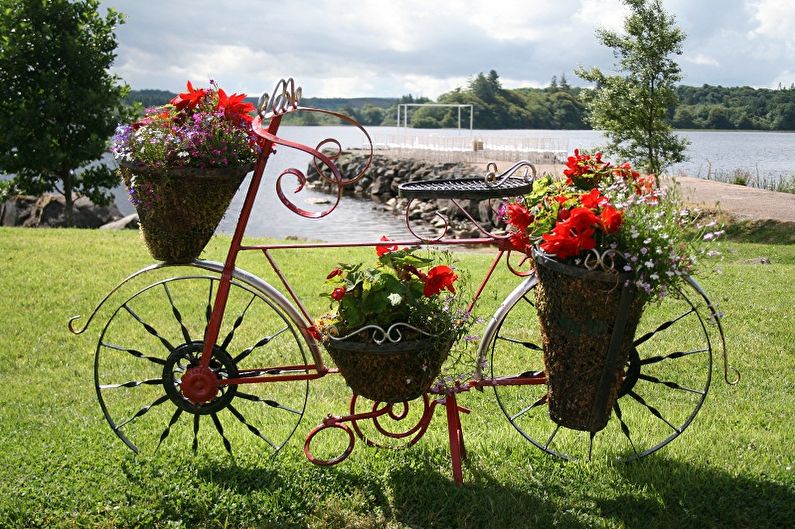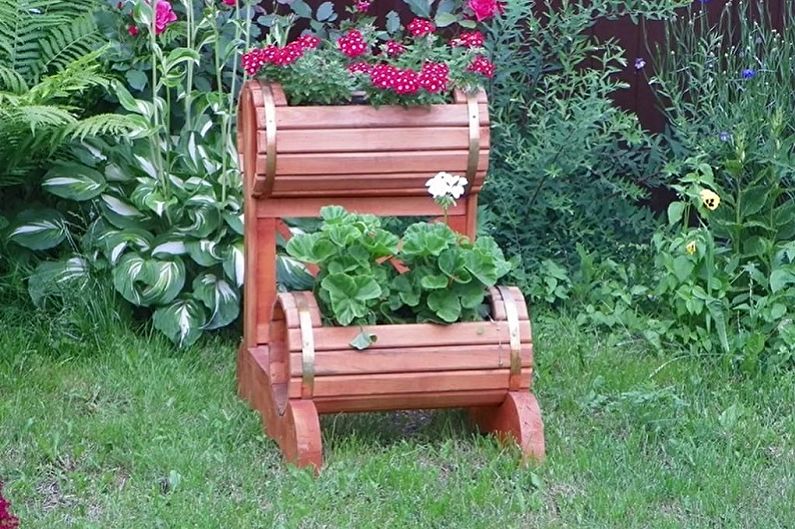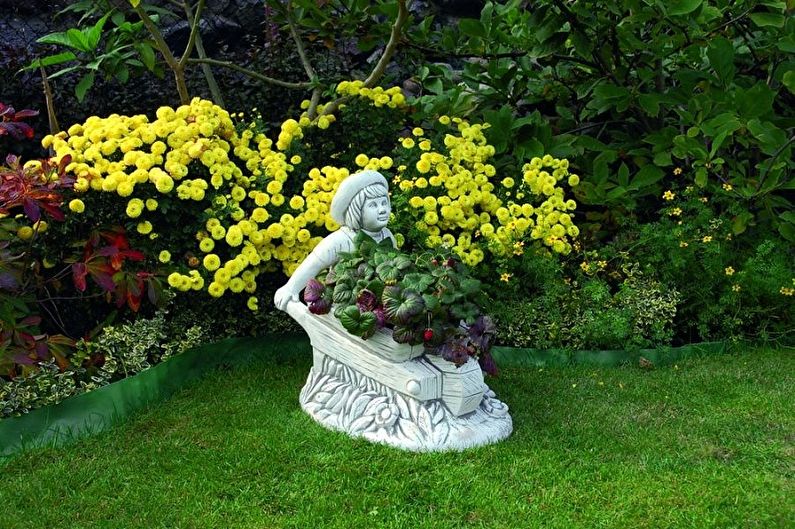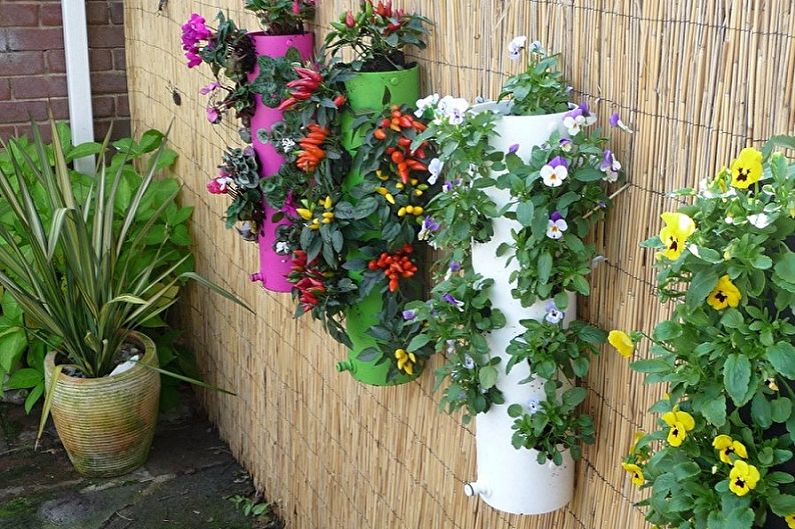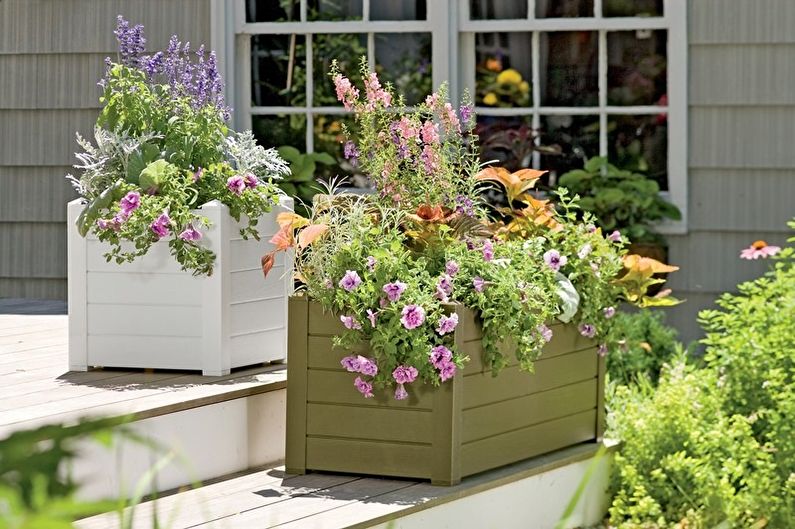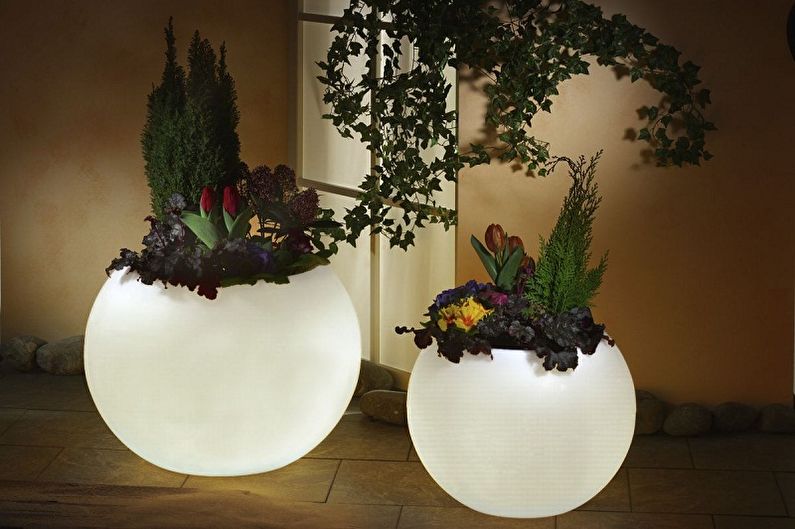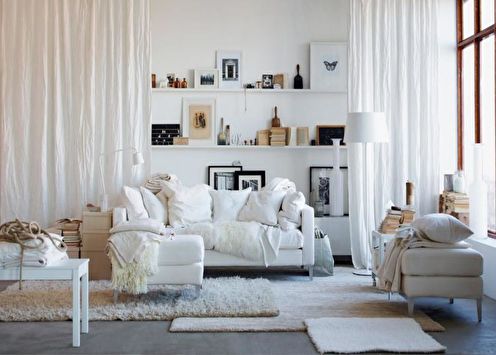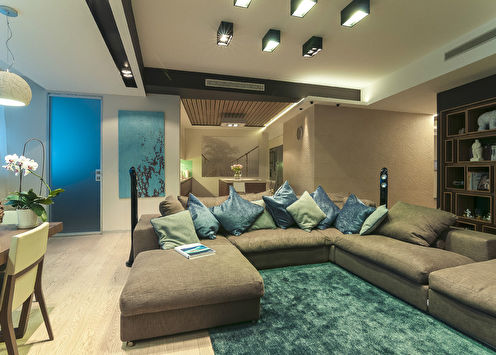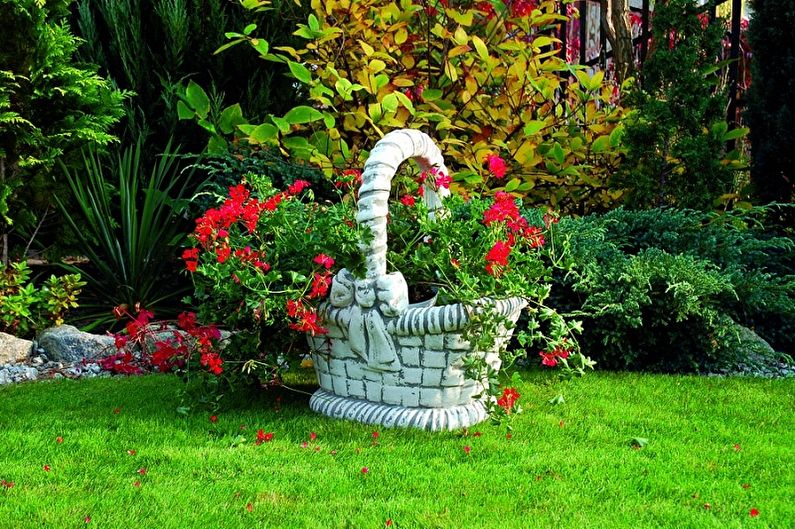
Country life in our time is gaining great popularity. Cottage and residential areas are purchased with the aim of not acquiring a small garden, as in Soviet times, but rather to get a wonderful place to relax in nature. House territories try to decorate as much as possible with hedges, flower beds and other landscape "little things" that give aesthetic pleasure. Not the last role in floristic decoration is played by street flowerpots. They have many interpretations and are able to perfectly decorate the site, and made with their own hands, they also save financial resources. In our article, we will consider interesting options for street pots, as well as methods for their manufacture.
Features of street flowerpots
Flowerpots with flowers in a suburban area can significantly save space, so even on 3-4 acres it is quite possible to organize an excellent flowering greenhouse. Sometimes they are used even to organize a mini-garden, planting vegetable crops (cucumbers, tomatoes, etc.). They are easy to place on any territory of the site, decorate fences and hedges without occupying the useful land area, and, if necessary, move them to the veranda, loggia.
The advantage of planting flora representatives in flowerpots is the ability to provide quality care, extend the flowering period, and ensure lush growth and flowering. A potted plant is much easier to provide with the necessary lighting, sufficient moisture, and nutrient soil that is suitable specifically for it.
Modern street flowerpots also perform a decorative function, and this applies not only to plants, but also to the containers themselves. What landscape designers will not come up with! In addition to standard pots made of different materials, they use the most unexpected household items, turning them into real flower beds.
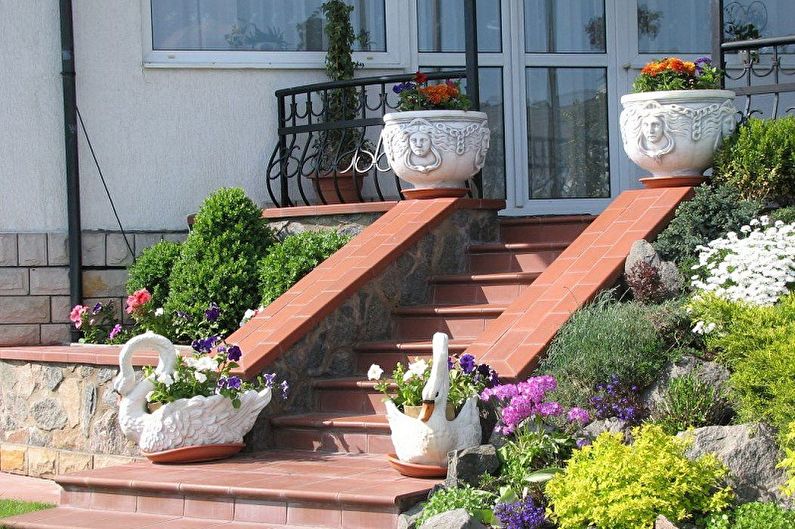
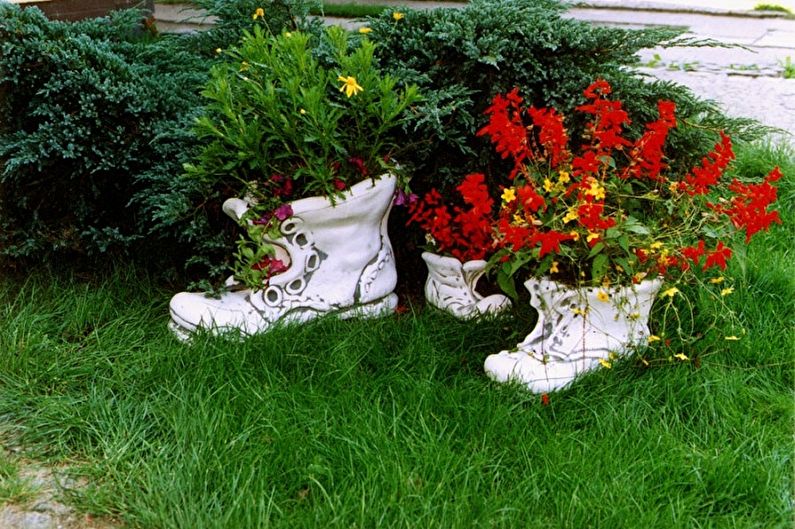
Types of street flowerpots
Today's flowerpots for home gardens are very diverse. On sale you can find a variety of their shapes and sizes. If the choice of the shape of the pot is based on personal preferences, then with the sizes you need to be more careful. It is advisable to build on the size of the area on which the pot will be installed. If you plan to place it on a spacious platform or alley, it is better to choose a larger flowerpot so that it does not get lost in the surrounding landscape design. For small areas, smaller pots are suitable, which will not overload the situation and occupy the passage territory.
Materials
Ready-made outdoor flowerpots for sale are made of various materials, on which both the appearance, the duration of operation, and the cost of the product depend. The most popular materials are:
Plastic - this type is considered the simplest and has a low cost. Their main disadvantage is exposure to chemical and mechanical influences, which reduces their service life. But they have a wide variety of models. Due to the flexibility of the material, flower pots of various shapes and sizes are produced from it. Plastic has an extensive color palette, is able to truly imitate a stone, ceramic or metal surface;
Wooden - perfectly fit into any landscape design. You should pay attention to the fact that the material is able to perfectly retain moisture, so it is additionally treated with special coatings. If this is not done, they will quickly lose their quality characteristics and become unusable;
Clay (ceramic) - have excellent aesthetic indicators, perfectly pass air, but the earth in such containers dries quickly and requires frequent watering;
Metal - they are highly durable, but are subject to the negative effects of moisture, so from time to time they need to be treated with anti-corrosion compounds. In modern production, materials such as steel, brass are used, less often - cast iron. Particularly beautiful look metal vases in stands made by forging;
Concrete - the most durable flowerpots that can last for decades without losing their aesthetic and practical properties. The main advantage is that plants in such containers will always feel comfortable, they will be protected from drying out in the hot summer and overcooling in the cold season. The inconvenience is the bulkiness of the flowerpots, which greatly complicates their transportation.
There are also many options for making street flower pots with your own hands, where the list of materials is expanding significantly, but we will talk about this later.
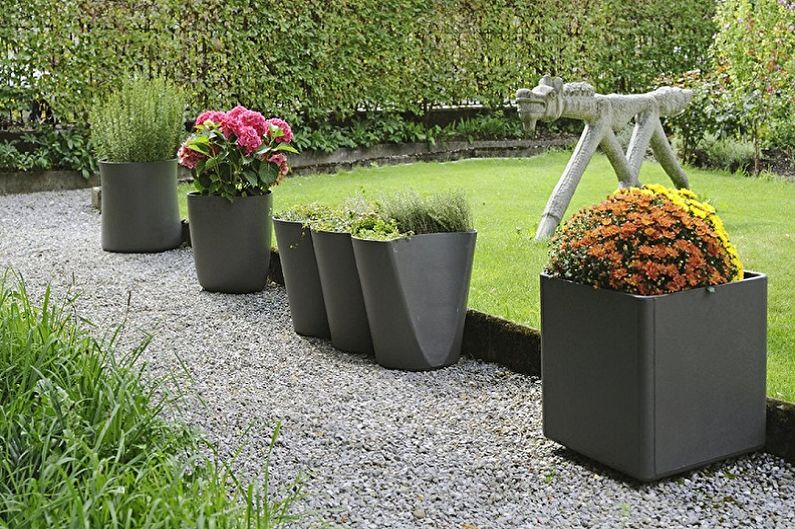

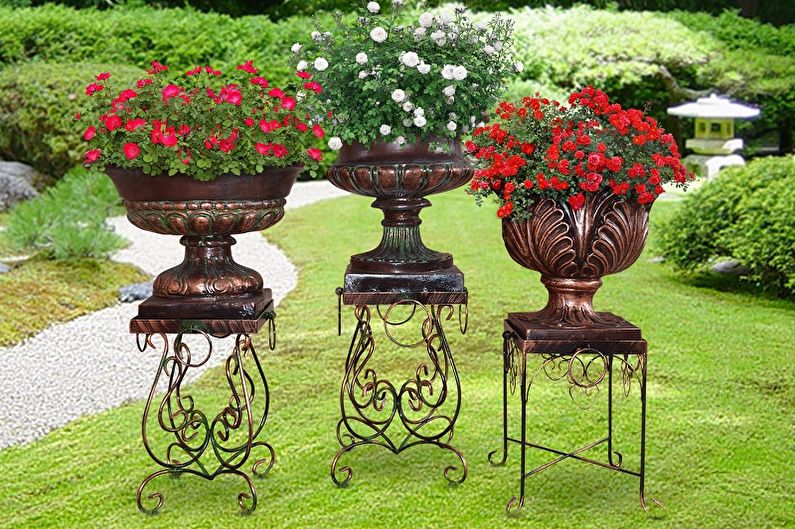
Installation methods
Outdoor flowerpots, depending on the model, have different installation methods. The most popular are stationary, designed for outdoor installation. As a rule, they are endowed with impressive dimensions that do not allow the structure to fall under the influence of any factors (strong wind, mechanical influences).
Smaller pots are placed in decorative table stands. An equally interesting option is hanging planters, with which you can decorate the terrace, the main entrance to the house or the fence. Most often, ampelous plants are located in them, the branches of which descend down lush cascades.
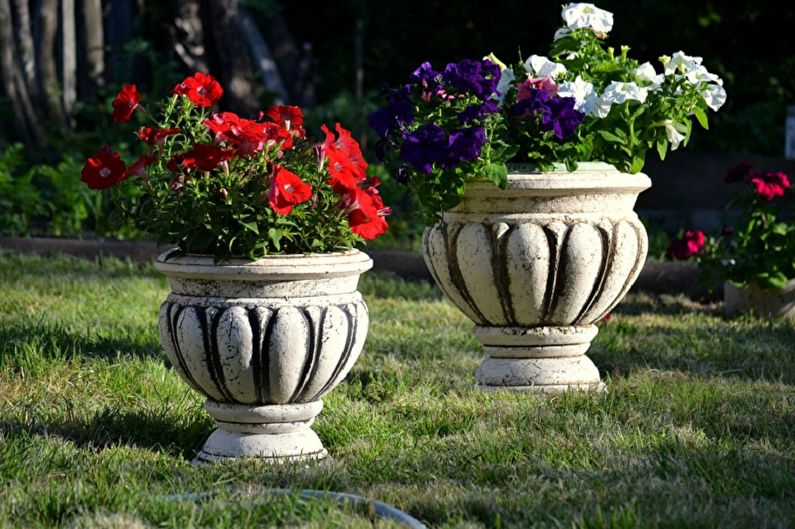

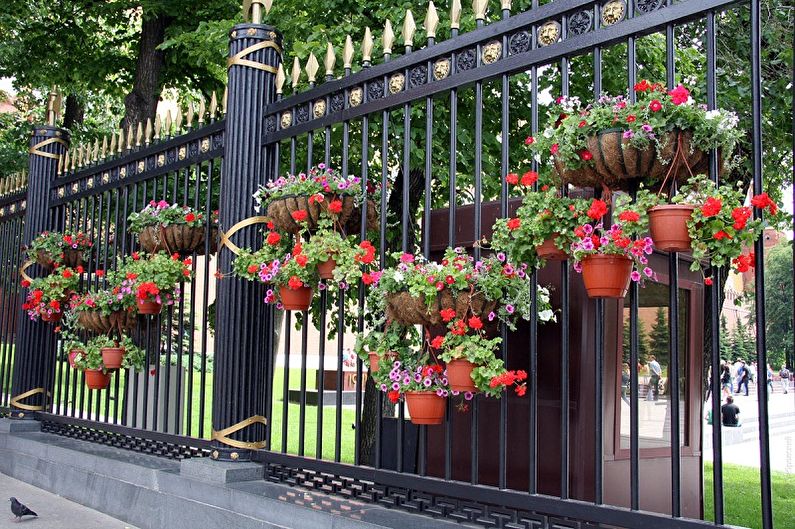
DIY flowerpots for flowers
Although most of the above varieties can be bought on the open market by choosing the most suitable model for material, installation and cost, many prefer to make “homes” for plants with their own hands, especially since you can use everything that is at hand without raising funds. Consider some simple but very nice options.
Street flowerpots from plastic bottles
Surely many in the arsenal will find used plastic containers for drinks. Do not rush to throw it away, as you can make a variety of flower pots from them. Everything will depend on how you cut the container. In a large bottle, you can cut out a lateral oblong hole and lay it with the reverse side horizontally on the ground, paint and fill up the soil. Often such home-made flowerpots give any original form, turning them into funny animals.
Another interesting option is to cut the bottle in half: the lower part will turn into a flower pot, and the upper will become an elegant stand. If you paint the resulting design with silver or brass paints, you can get a real masterpiece.
From small plastic bottles you can compose an entire composition, create hanging planters, as shown in the photo, or the original vertical gardening of the fence.
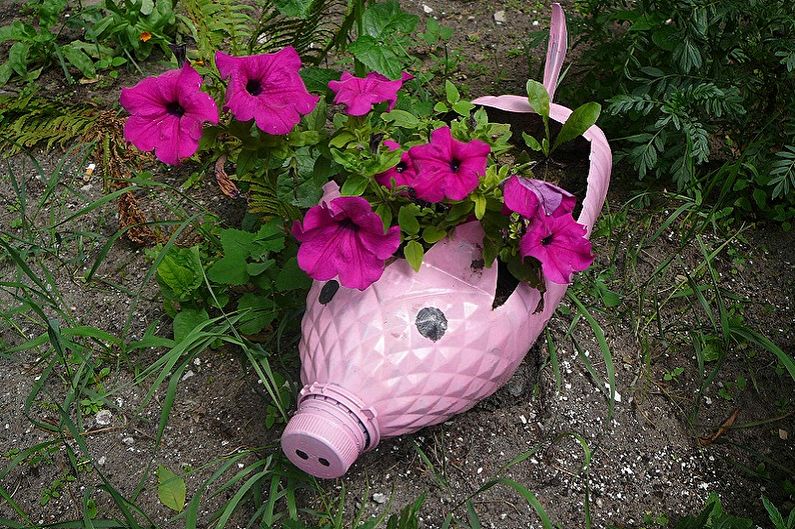
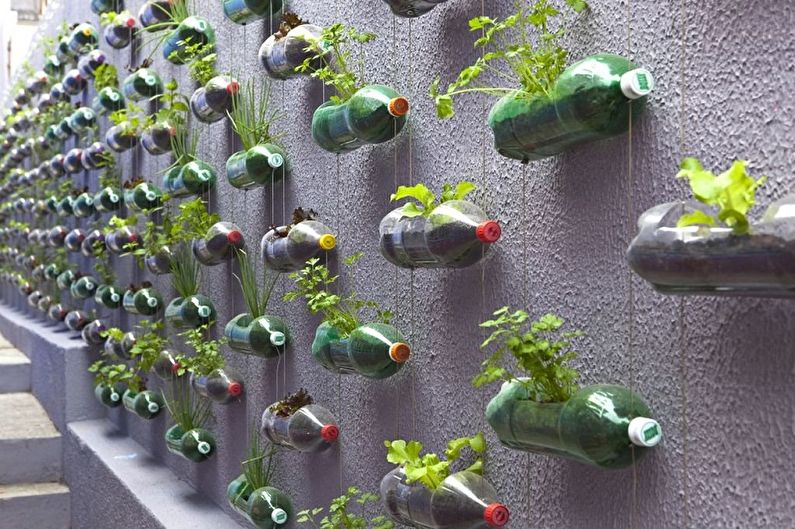
Flowerpots from dishes
Now it’s quite fashionable to design flowerpots from dishes, and absolutely any container painted in bright colors is useful. For these purposes, teapots and pans will come in handy, and a colander will completely eliminate the need to create drainage holes. Often from the old services there are separate cups and saucers that stand alone on the shelves. In this case, there is a chance to give them a second life in the form of miniature flowerpots. Since the containers are quite small for planting flowers, you can equip them with a "home" for succulents and other small crops.
Another option is not to paint the dishes, but to leave them in their original form or even artificially age.Such a flowerpot, for example, from a kettle that has seen types, will appeal to lovers of retro compositions and designs for rustic styles.

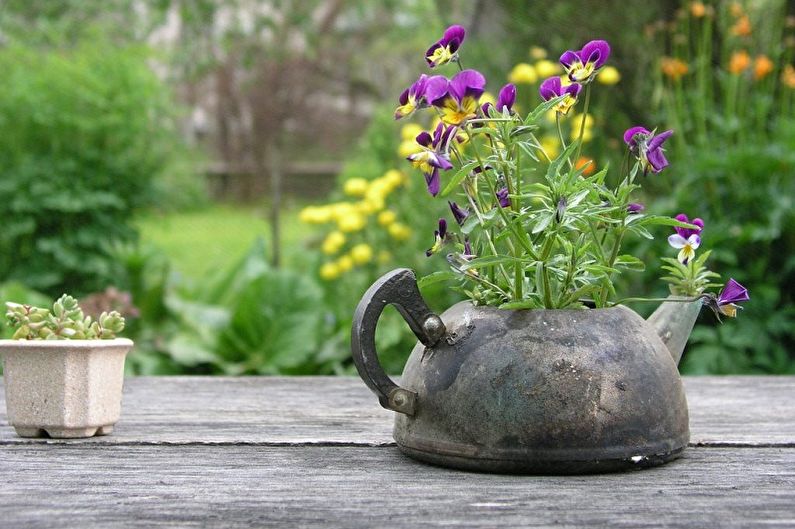
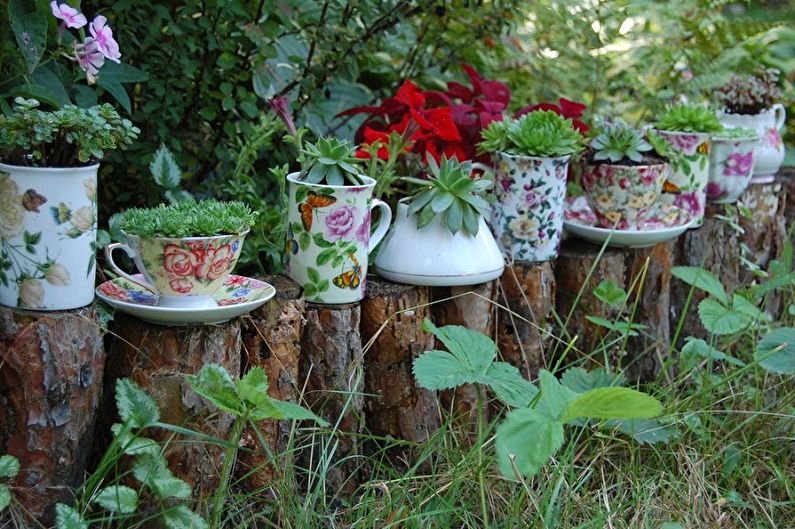
Street flowerpots from a tree
Wood is an excellent material that is easy to process. There are a lot of options - it’s worth connecting a fantasy, and you can come up with the most unusual designs. The simplest, but rather original option is a flowerpot from a deck.
Often, after sawing or trimming old trees, fragments of its mighty pillar remain on the site - they are also used to organize mini-beds. To do this, lay the log in a horizontal position and cut a recess in the upper part - first, holes are drilled as close to each other as possible, and then, using a chisel, the inner wood is removed. They also use an old barrel, simply cutting it in half.
It is worth considering that wood can quickly become worthless under the influence of moisture, so the inside of where the soil will be filled up must be treated with a stain and put polyethylene on the bottom. And the whole structure is better to be painted and varnished to maximize the service life.
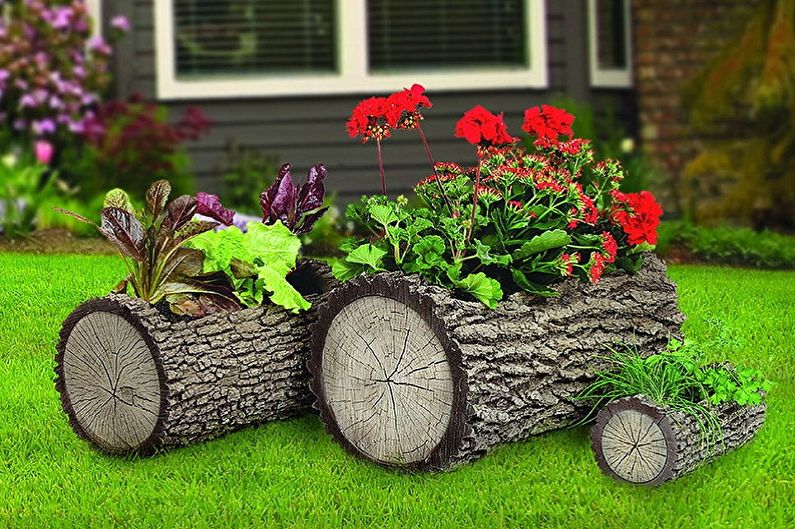
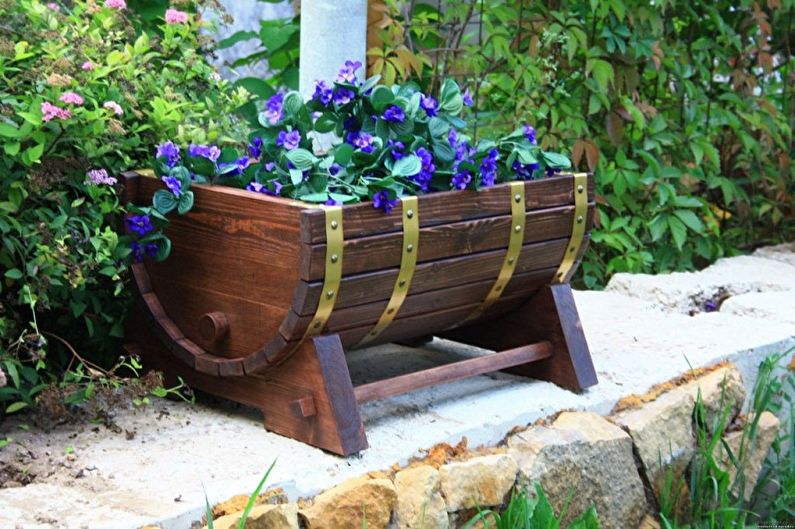
Flower pot made of concrete
The method of manufacturing a street flowerpot using cement can perhaps be called the most time-consuming, but it will result in a reliable and durable construction. First you need to prepare two containers, the same in shape, but different in size, where one should be slightly smaller than the other. Next, we prepare the solution: we take cement and sand in a ratio of 2: 3, mix and, without stopping interfering, add a little water to form a homogeneous mass.
When the solution is ready, we lubricate the containers with vegetable oil: in a large mold, we smear the inner walls, and in a small one, the outer ones. In a large form, fill a solution with a height of 3-5 cm and insert small tubes, on which, when the concrete begins to harden, we establish a smaller shape. Pour cement mortar into the piers and leave everything to solidify for a day.
After the allotted time, the smaller form should be removed, the cement form must be sprinkled with water and covered with polyethylene. Such actions are carried out throughout the next week, after which the finished flower pot is shaken from the main form.
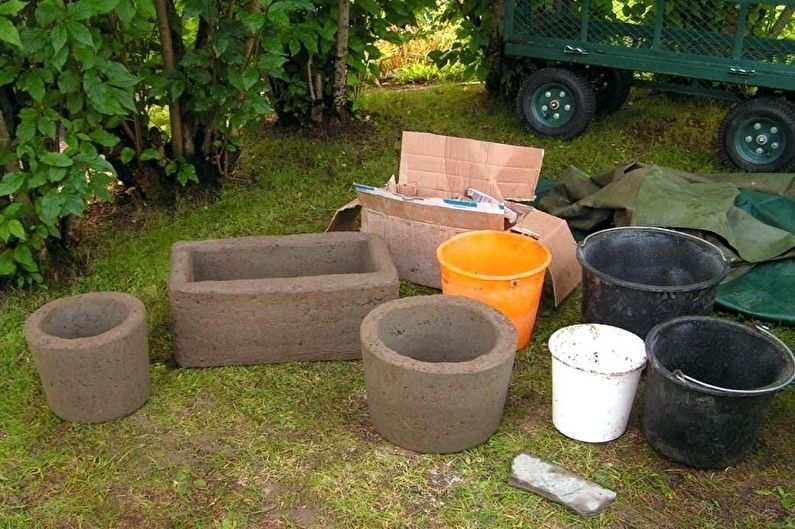
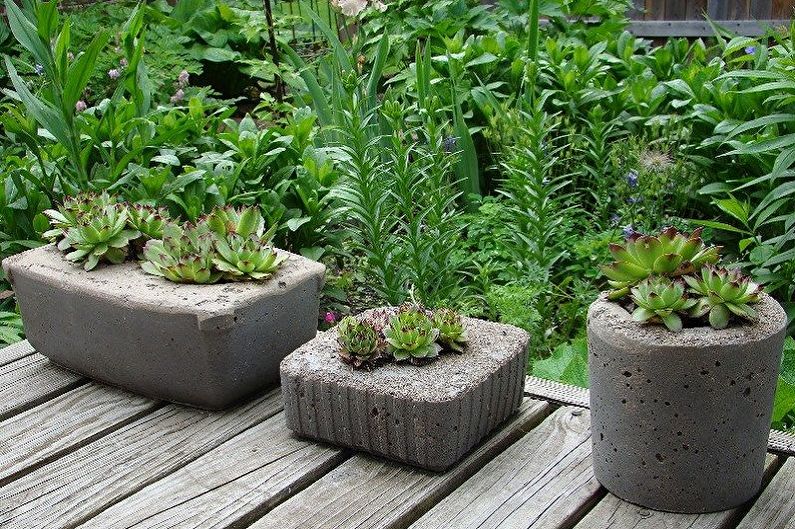
Street flowerpots - photo
Street flowerpots are a magnificent decoration of any house plot. They can be picked up or decorated in any color, however, it is worth considering that the beauty of a flowerpot should not overshadow all the charm and richness of blooming buds. Further familiarization with the variety of street flowerpots is proposed to continue in the photo gallery, where we tried to collect the best collection of pictures. Enjoy watching!
